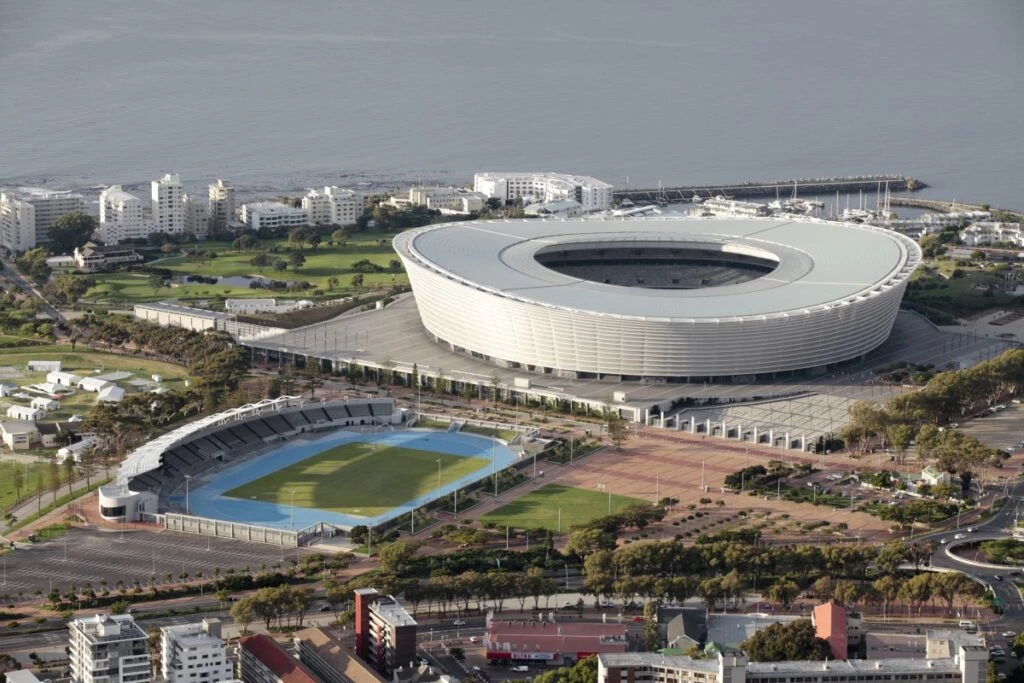
Why the future of buildings is efficient, safe, and sustainable
Throughout my life, I’ve traveled to many places for work, pleasure, and education. Often with family, sometimes alone. Whether I am in Barcelona or Buenos Aires, Austin or Cleveland, Doha or Tel-Aviv, or closer to home exploring Manhattan, I’m always struck by the variation in the built environment.
Of course, cities look different based on when they were built, along with the cultural and architectural differences they reflect. There’s no mistaking Rome for Tokyo, for instance.
And yet, all over the world, the people who govern these cities have the same challenge: how to better serve residents and visitors. Whether it’s improving quality of life, the future of work, accessibility, or sustainability, city leaders and planners are thinking deeply about what the future holds and how to best prepare.
I wrote earlier in the year that we cannot miss the current chance to rebuild our infrastructure for accessibility. The same imperative applies to the buildings where we live, work, learn, and play.
Above all, our buildings don’t exist in isolation. I use the term “built environment” as a catchall to describe the various structures that distinguish cities from the natural environment. Looking ahead, the biggest benefits will be realized when buildings operate as a seamless part of the larger system of infrastructure.
Better accessible experiences
For anyone working in or visiting a place, the behind-the-scenes operations should remain invisible. What matters is the experience: how easy and accessible it is getting in and out of a space or building, how comfortable it is to accomplish work, and how seamless it is to visit. Reducing barriers and enabling a positive experience is what people want, and technology gives us much better ways of doing that.
But how does that happen? Let’s take a fun example—going to a sporting event. What makes it work?
- An arena, like Madison Square Garden in New York, that’s connected to several major transit systems so people can use the mode of transportation that best fits their needs.
- Ticketing that is easy to scan and keeps people moving through lines quickly. This is better for fans and workers.
- A fully accessible space that helps everyone get to where they are going, easily and comfortably.
- Contactless payment to keep concessions lines fast and short.
- Strong connectivity that lets thousands of people use their devices.
Boosting operations with data
Heathrow airport is using data-driven insights to improve airport passenger flow, which helps deliver greater efficiency and cost savings for the airport and its carriers through more streamlined turnaround times for planes. This directly and positively impacts both the passengers and the staff working at the airport.
Daily operations—from security to air conditioning to lighting—come at a considerable cost. The fastest way to efficiency and cost reduction is by using data to make rapid, informed decisions. This is particularly important for older buildings that were not made for today’s technology and construction standards. As a result, the first rule for improving operations is that any changes or upgrades must apply to prioritized use cases.
Creating a safer workplace
Our buildings also have a major impact on the way people work. For example, the physical workspace has an influence on employees’ ability to collaborate—it needs to accommodate employees’ needs throughout the day, and it needs to be intentional in facilitating movements in, out of, or around the space.
Government adoption of remote and hybrid work has varied widely since the start of COVID-19. But as governments invest in new buildings, it only makes sense to design them for safer working conditions—whether for hybrid or in-person workforces. It’s not only about productivity but also about creating a better employee experience.
For example, Italy’s National Institute for Insurance against Accidents at Work launched a new badge system to solve building access issues. This resulted in a streamlined process for visitor access while ensuring that employees could easily move around the workplace. The new badge system made it easy to enable limited access to its physical spaces and data center only to authorized personnel.
Building sustainably
Whether it’s a new building or the renovation of an old one, construction projects are a major opportunity to ensure focus on sustainability as a strategic priority. Energy efficiency across operations is a high priority in helping organizations achieve their sustainability goals while reducing costs of lighting and running heating, ventilation, and air conditioning (HVAC) systems. The automation of these systems to respond when buildings, floors, or even individual rooms are occupied can result in significant efficiencies.
In a great example of how this works, MacDonald-Miller Facility Solutions helps customers build energy-efficient buildings and keep them operating at peak efficiency. MacDonald-Miller has gone all in with the Microsoft Cloud to design cutting-edge smart-building systems that save customers money.
But sustainability isn’t only about energy or carbon emissions. Technology can also help during construction to ensure building placement has a minimal environmental impact, enables more sustainable water use practices, and minimizes waste.
As we implement these solutions at scale, people will benefit from government and other publicly owned spaces and buildings—such as parks, arenas, or stadiums—to help them get the most out of their experience. Better operations help governments save money, and a focus on sustainability will ensure these spaces contribute to a healthier, cleaner future.
Transforming the built environment
By making bold investments in solutions that deliver on efficiency, safety, and sustainability goals, governments can make an outsized impact because of their vast real estate holdings. They also are major employers, and employees stand to realize significant benefits when improvements are made to government buildings. Our buildings were created to serve the public—and now we have the opportunity to make informed choices that will transform our built environment for the better.
Stay up to date on Microsoft’s global approach to government infrastructure by visiting the Microsoft for Critical Infrastructure website.




